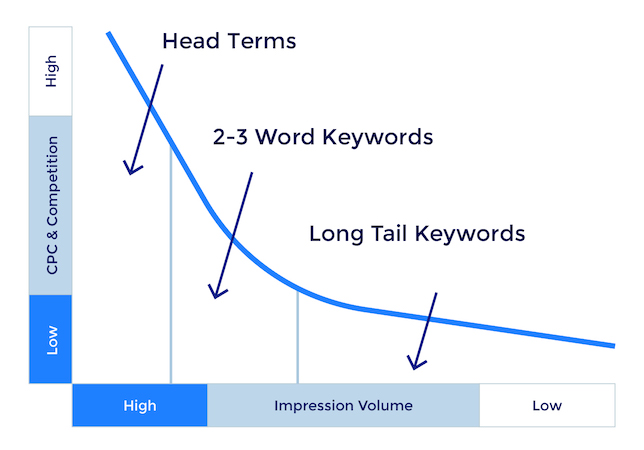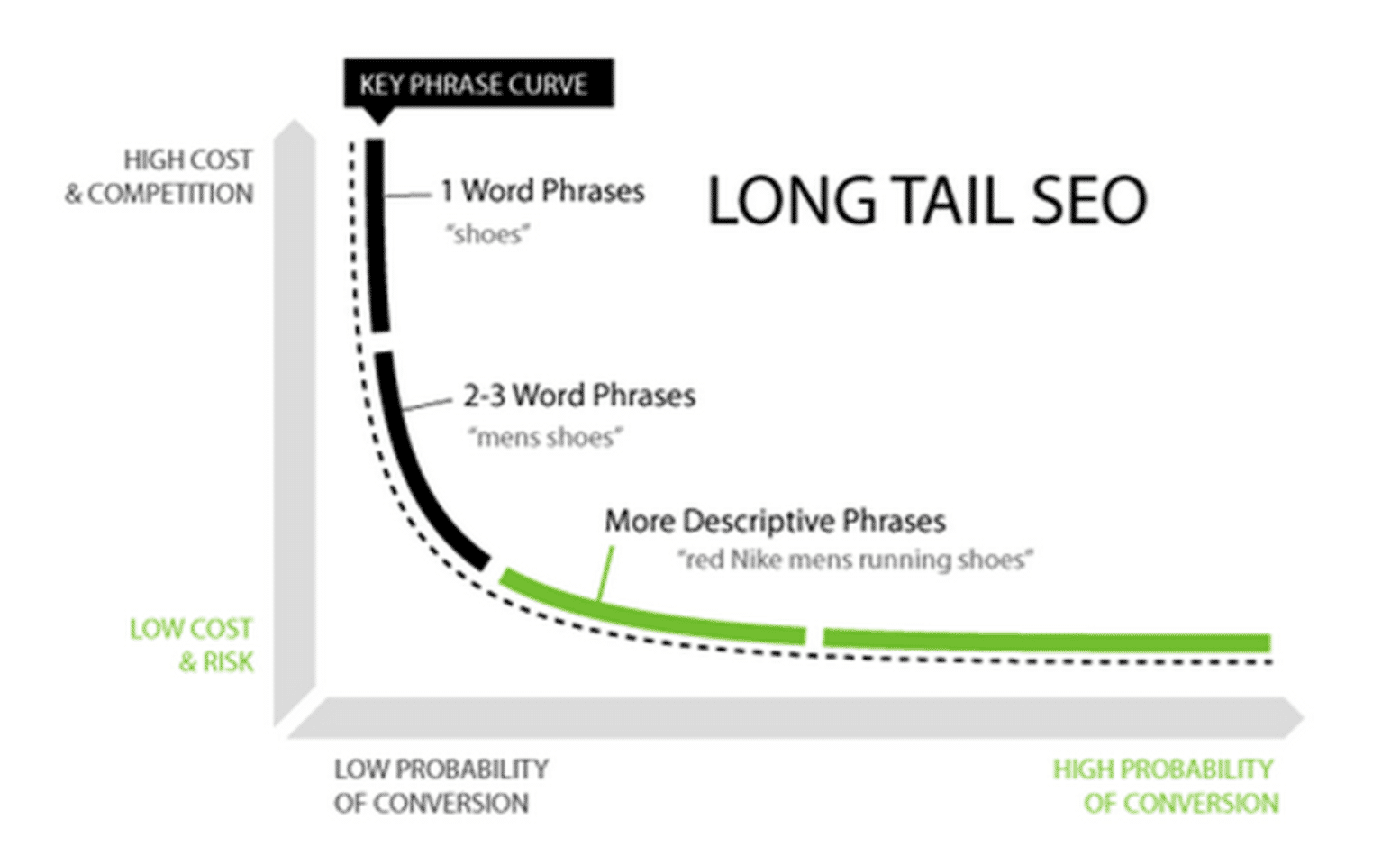Long-tail keywords are specific, multi-word search phrases typically consisting of three or more words that users enter into search engines when looking for detailed information or products. Unlike short-tail or “head” keywords, which are broad and generic (e.g., “shoes”), long-tail keywords are more descriptive and targeted (e.g., “best red Nike running shoes for men with flat feet”). The term “long-tail” comes from the search demand curve, where a small number of popular keywords (the “head”) account for high search volume, while the vast majority of queries (the “tail”) are less common but collectively drive significant traffic.
These keywords often reflect a user’s intent closer to making a decision, such as purchasing or seeking in-depth advice, because they indicate a more refined search. For instance, someone searching for “shoes” might just be browsing, but a query like “affordable waterproof hiking shoes for women size 8” shows clear buying intent.
Why Do Long-Tail Keywords Matter in SEO?
In search engine optimization (SEO), long-tail keywords are valuable because they usually have lower competition, making it easier for websites—especially smaller ones—to rank higher in search results. While they attract fewer searches individually (often under 100 per month), they can cumulatively account for 70-80% of all search traffic. This is due to the “long-tail effect,” where niche queries add up to surpass the volume of broad terms.
They also tend to have higher conversion rates, as searchers are often further along in the buyer’s journey. For businesses, this means more qualified leads and better ROI on content efforts. However, not all long-tail keywords are automatically easy to rank for—some can still be competitive if they’re highly specific to popular topics.
Examples of Long-Tail Keywords
To illustrate the difference:
- Short-tail keyword: “coffee maker” (high volume, high competition)
- Long-tail keyword: “best automatic drip coffee maker under $50 for small kitchens” (low volume, low competition, high specificity)
Other examples include:
- “how to train a puppy not to bite hands” (pet training niche)
- “vegan gluten-free chocolate cake recipe easy” (food blogging)
- “wireless noise-cancelling headphones for running 2025 reviews” (tech reviews)
These phrases often appear as questions or include modifiers like “best,” “how to,” “reviews,” or location-specific terms.
How to Find and Use Long-Tail Keywords
- Research Tools: Use free or paid SEO tools like Google Keyword Planner, Ahrefs’ Keyword Generator, or Semrush to input seed keywords and generate long-tail suggestions with search volume and difficulty metrics.
- Analyze Competitors: Look at what long-tail terms your competitors rank for using tools like Ahrefs or SEMrush.
- Incorporate into Content: Optimize blog posts, product pages, or videos around these keywords. Place them naturally in titles, headings, meta descriptions, and body text. Create in-depth content that answers the specific query to improve rankings.
- Monitor Performance: Track rankings and traffic with Google Analytics or Search Console to refine your strategy.
Benefits and Drawbacks
Benefits:
- Easier to rank due to lower competition.
- Higher conversion rates (up to 2.5x higher than short-tail).
- Better for voice search and featured snippets.
- Cost-effective for PPC campaigns with lower CPC.
Drawbacks:
- Lower individual search volume requires targeting many keywords.
- Can be unpredictable in traffic.
- Research takes time to identify effective ones.
Overall, long-tail keywords are a cornerstone of modern SEO strategies, especially for niche sites or those starting out, as they allow you to capture targeted traffic without competing directly with big players.

